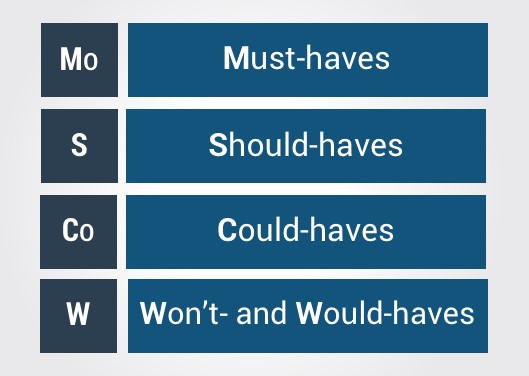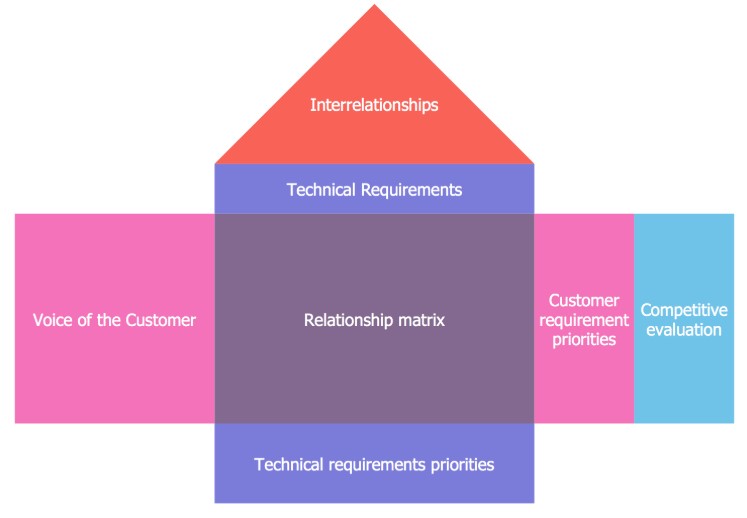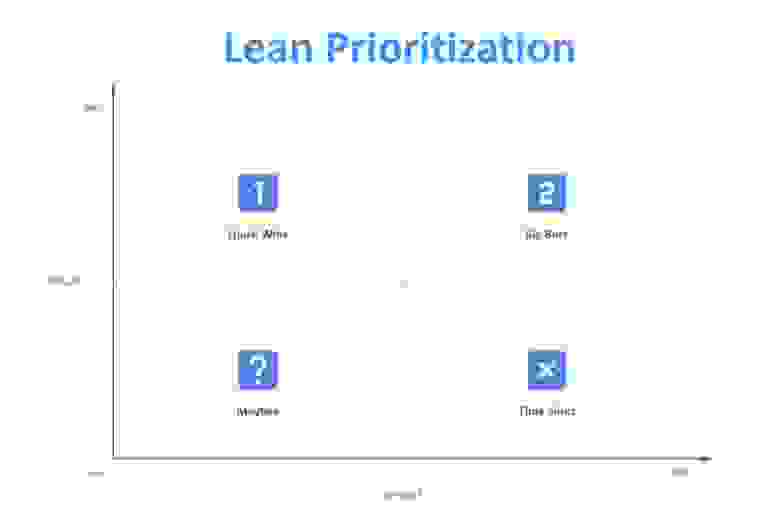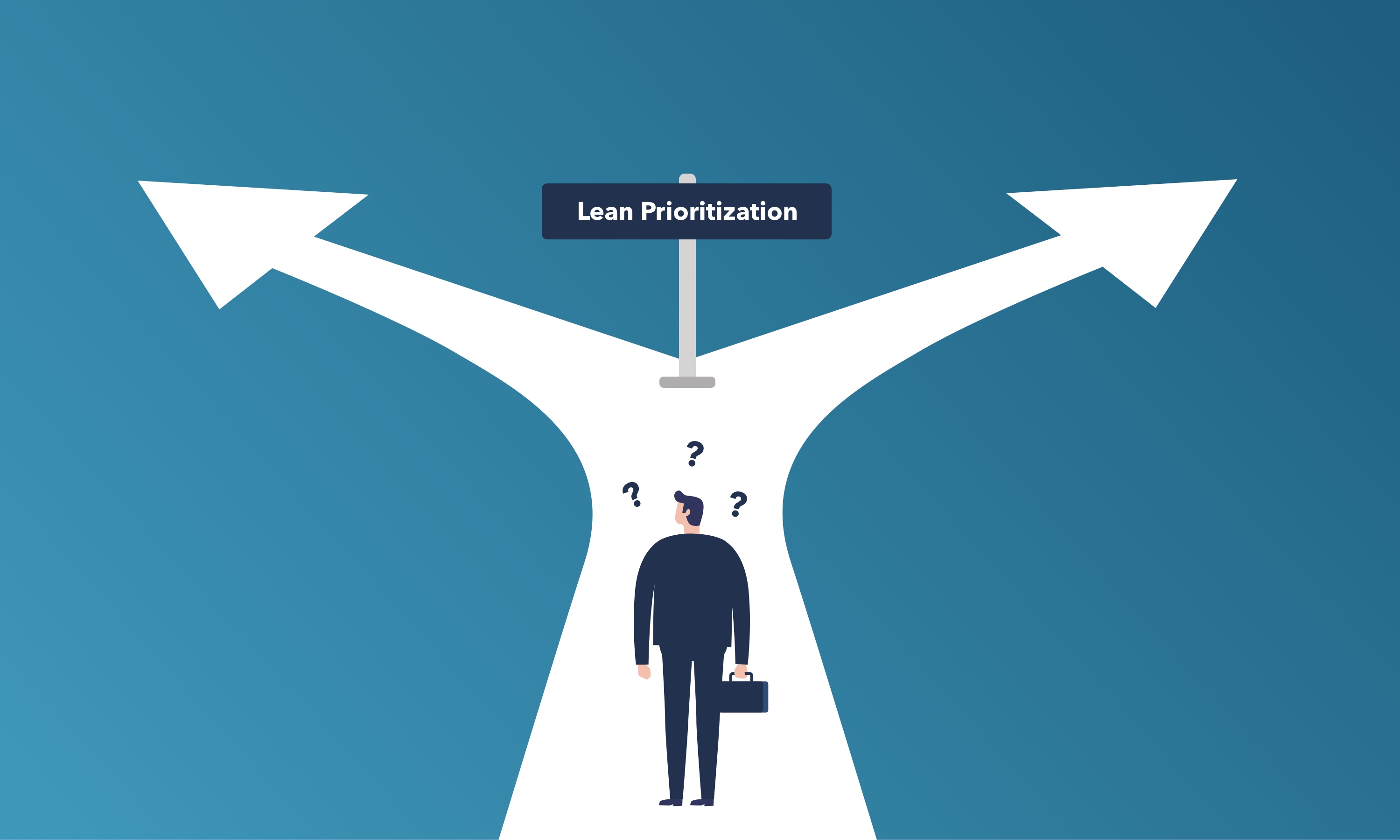Dealing with priorities is a constant necessity in product management and development processes. In order to improve professional skills, product managers should find time to explore and try using simple and complex methods and frameworks to determine priorities.
The Lean Prioritization approach is one of the simplest and most accessible methods that help product managers with managing task backlog, especially when it needs to be done quickly and efficiently. This post is about the power of Lean Prioritization.

In our previous article, we described in details how to choose features for development, but rather briefly focused on prioritization with the Lean approach. This material is actually dedicated to Lean prioritization and with this article, we begin a series of posts devoted to different methods and frameworks of prioritization.
Whether it regards product features, separate tasks or items or global company's challenges, prioritization process helps to define and separate important and urgent things from nonimportant and no-rush, learn how to plan effective timelines, identify boundaries of work and differentiate between wants and needs.
Effective prioritization means balancing between delivering value and the limited resources available.
There are many factors that can disturb product managers to do their job. Among the most impactful, the following look obvious:
Feature prioritization in product management is a serious process that requires thorough efforts and attention.
Experienced product managers apply various simple and complex approaches and methods to prioritize and work with them. What are the most effective?
Kano model is well known as the method of determining customer satisfaction with product features. The theory provided by Noriaki Kano makes it possible to describe the satisfaction of what needs leaves consumers indifferent, dissatisfied, or makes them totally satisfied.
Modeling of the method requires a sample of users that should talk about their emotional state at the sight of a certain feature. This helps to determine the features that users cannot perform without and also identify the most important for them. This approach was used to test the Wi-Fi feature in airplanes.

MoSCoW is a popular prioritization system used in product management, software development, and business analysis.
The consonant letters of the acronym define priority categories: must, should, could and would (or won't).

QFD is the Quality Function Deployment approach that is aimed to match customer and company desires. The technique is often used by product developers.
You need to build a matrix that includes user requirements distributed by priorities and the rating of characteristics of certain features. The matrix also displays information about the characteristics of competing products.
The QFD matrix helps to understand the real feasibility of implementing certain requirements.
The most important thing according to QFD is to help focus on product characteristics viewed from a client and company perspective. The matrix is compared with the figure of the house, calling it «the house of quality.»
This «house» is a table, the columns of which correspond to the technical characteristics, and the rows correspond to the consumer ones.

Story Mapping method is about building a map of user stories. The approach was first described in 2005 and then had a number of improvements and clarifications.
According to Story Mapping, managing a single backlog is not an adequate way to prioritize work. You need to apply a more solid structure.
The story map is organized as follows:
Groups of related stories can be grouped into Activities.

All of these methods look helpful for strategic planning. However, they require time and resources.
If you need to apply a quick and easier approach, then it's time to discover more about a daily basis prioritization solution — Lean Prioritization.
Lean Prioritization system is visualized with the help of the Value and Effort matrix (that is also known as 2x2 prioritization matrix).
This matrix is helpful in decision making and identifying what is important or risky and where to direct the efforts. Lean Startup entrepreneurs also use it for product development prioritization.

Sometimes you may come across this concept associated with another popular term – Minimum Viable Product (MVP).
It assists product managers in sorting out all the items and putting things in order.
Be sure: when you do not care about the product backlog, it can quickly become a dump for hundreds of features and bugs. The disregard of prioritization occurs as it becomes harder to define inappropriate features, as they simply were overlooked.
To run Lean prioritization, you may draw a large “plus” sign on a whiteboard, then mark “Value” and “Effort” along the vertical and horizontal axes.
The most advanced and professional way is to use a special product management tool or a framework for this purpose.

To continue working with the 2x2 Lean Prioritization matrix, you set up Value and Efforts parameters for each idea. Comparing these parameters will help you prioritize the tasks better and choose the most important of them for development.
Considering the relative value of each task, make sure you pay enough attention to the following:
Here’s how Lean Prioritization matrix is visualized in ProdPad:

You may also score raw insights and draft features using Value and Efforts factors without any additional criteria with the help of Hygger.

The platform also proposes a great set of another prioritization frameworks for more complex purposes, such as Rice score model or ICE scoring system.
It’s better to revisit your 2×2 matrix regularly as your product will probably be developing over time. Perhaps you will need to optimize the matrix because the items seemed to be low value a month ago may then be of higher value.
Lean prioritization is a really effective helper for companies from various industries as all of them intend to stay competitive. The 2x2 matrix is a simple tool for prioritizing a product backlog that assists to focus on features that are most valuable to your clients compared to the efforts required to deliver them.
Have you ever applied the Lean approach? What do you think about it? Please, feel free to share your ideas.
The Lean Prioritization approach is one of the simplest and most accessible methods that help product managers with managing task backlog, especially when it needs to be done quickly and efficiently. This post is about the power of Lean Prioritization.

In our previous article, we described in details how to choose features for development, but rather briefly focused on prioritization with the Lean approach. This material is actually dedicated to Lean prioritization and with this article, we begin a series of posts devoted to different methods and frameworks of prioritization.
Key goals of any prioritization process
Whether it regards product features, separate tasks or items or global company's challenges, prioritization process helps to define and separate important and urgent things from nonimportant and no-rush, learn how to plan effective timelines, identify boundaries of work and differentiate between wants and needs.
Effective prioritization means balancing between delivering value and the limited resources available.
What can disturb prioritization?
There are many factors that can disturb product managers to do their job. Among the most impactful, the following look obvious:
- Wrong decision makers. These people can provide a negative impact on prioritization acts. Often, these wrong people influence decision-making based on their seniority in the business. It can be someone who enforces wrong ideas, who is actively opposed or struggles to make a wrong decision.
- Wrong methods or tools. They are actually not fit for purpose. You can cope with not ideal professionals somehow but choosing the appropriate methodologies, framework, templates, and professional tools require special attention and advanced product management skills.
Feature prioritization in product management is a serious process that requires thorough efforts and attention.
Experienced product managers apply various simple and complex approaches and methods to prioritize and work with them. What are the most effective?
Popular Prioritization Methods
Kano model
Kano model is well known as the method of determining customer satisfaction with product features. The theory provided by Noriaki Kano makes it possible to describe the satisfaction of what needs leaves consumers indifferent, dissatisfied, or makes them totally satisfied.
Modeling of the method requires a sample of users that should talk about their emotional state at the sight of a certain feature. This helps to determine the features that users cannot perform without and also identify the most important for them. This approach was used to test the Wi-Fi feature in airplanes.

MoSCoW prioritization
MoSCoW is a popular prioritization system used in product management, software development, and business analysis.
The consonant letters of the acronym define priority categories: must, should, could and would (or won't).
- Must have are the most important and urgent features
- Should have are important items
- Could have can be delayed for some time.
- Wouldn’t have are the features with the lowest priority

QFD method
QFD is the Quality Function Deployment approach that is aimed to match customer and company desires. The technique is often used by product developers.
You need to build a matrix that includes user requirements distributed by priorities and the rating of characteristics of certain features. The matrix also displays information about the characteristics of competing products.
The QFD matrix helps to understand the real feasibility of implementing certain requirements.
The most important thing according to QFD is to help focus on product characteristics viewed from a client and company perspective. The matrix is compared with the figure of the house, calling it «the house of quality.»
This «house» is a table, the columns of which correspond to the technical characteristics, and the rows correspond to the consumer ones.
- The roof visualizes the data on the correlation between the technical characteristics.
- The left side represents the priorities of user characteristics.
- The right side is the ratings of consumer characteristics.
- The basement visualizes the results of the analysis of the technical characteristics of competitors' products, the results of the strategy for changing the technical characteristics of the product, as well as the importance assessment.

User story mapping
Story Mapping method is about building a map of user stories. The approach was first described in 2005 and then had a number of improvements and clarifications.
According to Story Mapping, managing a single backlog is not an adequate way to prioritize work. You need to apply a more solid structure.
The story map is organized as follows:
- The horizontal axis represents the sequence of use. User stories or tasks in the sequence in which they are performed by users are located along with it.
- The vertical axis means criticality. User stories regarding how important they are (top to bottom) are located on it.
Groups of related stories can be grouped into Activities.

All of these methods look helpful for strategic planning. However, they require time and resources.
If you need to apply a quick and easier approach, then it's time to discover more about a daily basis prioritization solution — Lean Prioritization.
Lean Prioritization
Lean Prioritization system is visualized with the help of the Value and Effort matrix (that is also known as 2x2 prioritization matrix).
This matrix is helpful in decision making and identifying what is important or risky and where to direct the efforts. Lean Startup entrepreneurs also use it for product development prioritization.

Sometimes you may come across this concept associated with another popular term – Minimum Viable Product (MVP).
What makes the matrix good for prioritization?
It assists product managers in sorting out all the items and putting things in order.
Be sure: when you do not care about the product backlog, it can quickly become a dump for hundreds of features and bugs. The disregard of prioritization occurs as it becomes harder to define inappropriate features, as they simply were overlooked.
To run Lean prioritization, you may draw a large “plus” sign on a whiteboard, then mark “Value” and “Effort” along the vertical and horizontal axes.
The most advanced and professional way is to use a special product management tool or a framework for this purpose.

To continue working with the 2x2 Lean Prioritization matrix, you set up Value and Efforts parameters for each idea. Comparing these parameters will help you prioritize the tasks better and choose the most important of them for development.
- Value demonstrates which business value a particular feature may bring to the product/business.
- Efforts measure the resources you need to complete the task.
Considering the relative value of each task, make sure you pay enough attention to the following:
- Acquisition (will the feature help to attract new clients?)
- Activation (when will clients understand the value of the feature?)
- Reach (how many clients do the feature impact?)
- Revenue (how does the feature help to make money?)
- Retention (how can the feature return clients to make them activated?)
- Virality (how does the feature influence on the product virality?)
Here’s how Lean Prioritization matrix is visualized in ProdPad:

You may also score raw insights and draft features using Value and Efforts factors without any additional criteria with the help of Hygger.

The platform also proposes a great set of another prioritization frameworks for more complex purposes, such as Rice score model or ICE scoring system.
Final thoughts
It’s better to revisit your 2×2 matrix regularly as your product will probably be developing over time. Perhaps you will need to optimize the matrix because the items seemed to be low value a month ago may then be of higher value.
Lean prioritization is a really effective helper for companies from various industries as all of them intend to stay competitive. The 2x2 matrix is a simple tool for prioritizing a product backlog that assists to focus on features that are most valuable to your clients compared to the efforts required to deliver them.
Have you ever applied the Lean approach? What do you think about it? Please, feel free to share your ideas.